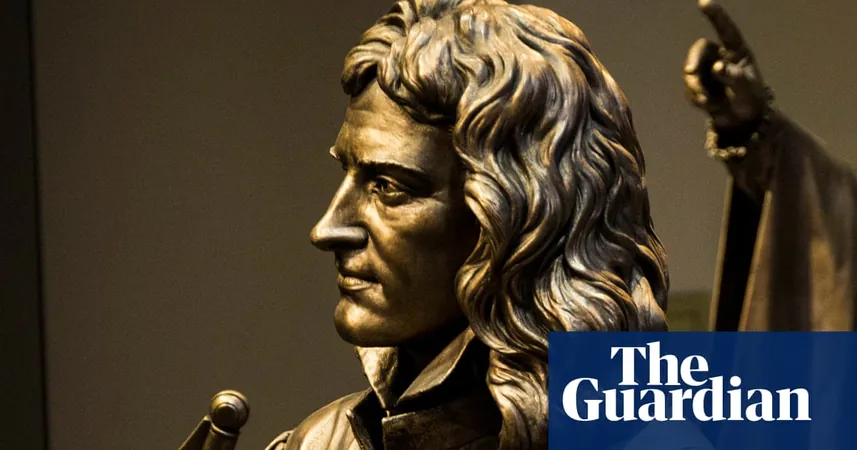
New Book Reveals Sir Isaac Newton's Hidden Ties to Slavery and Wealth Accumulation
2024-11-24
Author: Lok
Introduction
A groundbreaking new book has unveiled the often-overlooked connections between Sir Isaac Newton, the father of modern physics, and the transatlantic slave trade. Titled *Ricardo’s Dream*, the book delves into the life of 19th-century economist David Ricardo, while also shedding light on Newton's financial dealings as Master of the Royal Mint in the late 17th and early 18th centuries.
Newton's Role at the Royal Mint
Newton, who transformed our understanding of gravity and motion, was not only a brilliant scientist but also a significant financial player in London. During his 30-year tenure at the Royal Mint, he played a crucial role in overseeing the minting of gold – much of which was sourced from Brazilian mines worked by enslaved Africans. "I demonstrate, partly using his own correspondence archived by the Newton Project, that his wealth was closely linked to gold primarily from Brazil that was mined by enslaved peoples," reveals Nat Dyer, the author of the book.
Financial Impact and Wealth Accumulation
Despite experiencing substantial financial losses during the stock market crash of the early 18th century, Newton amassed a considerable fortune. At his death, his estate included a range of luxurious items, notably including sterling silver chamber pots that reflected his wealth and status.
Gold Minting Significant to British Economy
The influx of gold during Newton's time at the mint was significant: around £14 million was minted, which equated to the total amount minted over the previous 136 years. Newton's correspondence confirms the origin of this gold, with notes explicitly mentioning the West Indies and letters to the Treasury referencing Portugal as a supplier of gold.
Historical Perspectives
"He was at the very center of this gold rush. As more gold flowed into the Tower of London, his personal wealth grew," Dyer emphasizes. Although some may argue that this information changes our perception of Newton, Dyer insists that it doesn’t diminish his status as a 'epoch-defining thinker.' Instead, it emphasizes that even the most renowned scientists are products of their era.
Renowned historians echo this perspective. Professor Leonardo Marques from Fluminense Federal University contends that Newton's involvement with the slave economy is not surprising. "Banking and finance in early 18th-century Britain were inherently linked to the history of slavery," Marques states.
Dr. Patricia Fara, an emeritus fellow at the University of Cambridge, adds her insights into Newton's connections with the East India Company and his investments in the South Sea Company, a notorious slave-trading venture. "While we cannot impose our modern moral standards on historical figures, it’s critical to recognize that many individuals celebrated in history, including those in Westminster Abbey, were intertwined with the institution of slavery."
Conclusion
This revelation about Newton serves as a stark reminder of the pervasive nature of slavery in the financial systems of the time and challenges us to reassess how we view prominent figures from history. As we continue to grapple with the implications of these connections today, the book invites readers to reflect on the broader themes of morality and the benefits reaped from such legacies.



 Brasil (PT)
Brasil (PT)
 Canada (EN)
Canada (EN)
 Chile (ES)
Chile (ES)
 España (ES)
España (ES)
 France (FR)
France (FR)
 Hong Kong (EN)
Hong Kong (EN)
 Italia (IT)
Italia (IT)
 日本 (JA)
日本 (JA)
 Magyarország (HU)
Magyarország (HU)
 Norge (NO)
Norge (NO)
 Polska (PL)
Polska (PL)
 Schweiz (DE)
Schweiz (DE)
 Singapore (EN)
Singapore (EN)
 Sverige (SV)
Sverige (SV)
 Suomi (FI)
Suomi (FI)
 Türkiye (TR)
Türkiye (TR)